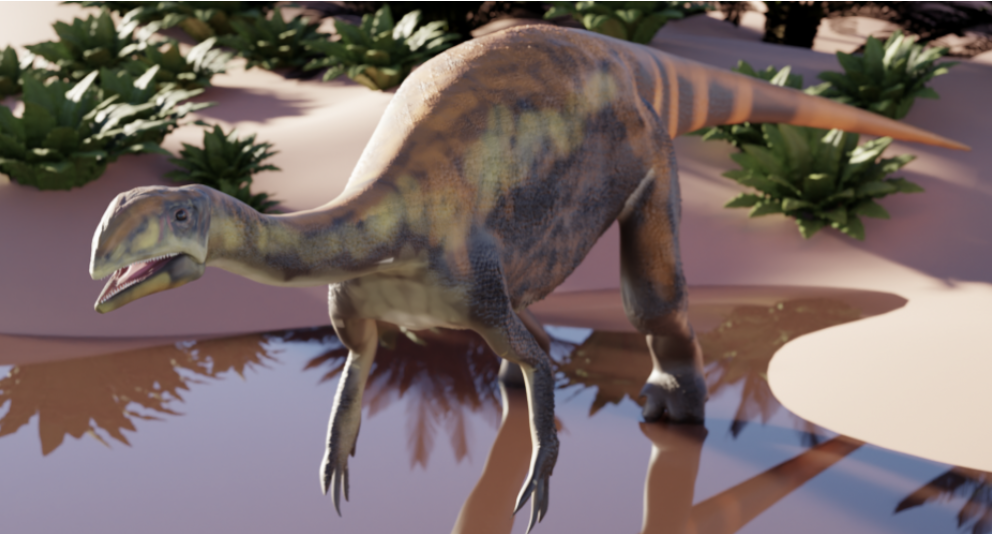
THE ICE SHEET'S HIDDEN STORIES
In 1979 a Danish scientist found something strange in northern Greenland. In a 100-metre deep layer of sediment he found remains of trees, insects and other life forms.
They were dated to be around 2 million years old. Greenland at that time was coveret by moors and open forests.

How was the vegetation in Greenland 2 million years ago? See the map in the book on page 37.
What other kinds of life were found in the layer of sediment?
How was it possible that trees could grow in Greenland at that time? Find help in the book on page 36.
In Jameson Land in East Greenland scientists found remains of a dinosaur. They named it “issi saaneq” that means cold bones in Greenlandic.
The dinosaurs lived in Greenland 150 million years ago.

The continents as we know them today were once part of a huge, continuous supercontinent called Pangea. At the time, around 450 million years ago, Greenland lay at the Equator, and the country was covered with lush forests, subtropical swamps, and volcanoes.
Write or record a fairytale with the title My encounter with issi saaneq.
Today, the Earth’s crust under the ice sheet is pushed down by the ice and forms a bowl-shaped depression.
If the ice sheet disappeared, the bedrock in the middle of the island would rise hundreds of metres and form a landscape equivalent to how Greenland looked before the landmass was covered by ice.

Make a model of the landscape under the ice.
What will happen to the bedrock if the ice disappears?
Which animals would become extinct or find other places to live if the ice disappeared?
In 1979 a Danish scientist found something strange in northern Greenland. In a 100-metre deep layer of sediment he found remains of trees, insects and other life forms.
They were dated to be around 2 million years old. Greenland at that time was coveret by moors and open forests.

How was the vegetation in Greenland 2 million years ago? See the map in the book on page 37.
What other kinds of life were found in the layer of sediment?
How was it possible that trees could grow in Greenland at that time? Find help in the book on page 36.
In Jameson Land in East Greenland scientists found remains of a dinosaur. They named it “issi saaneq” that means cold bones in Greenlandic.
The dinosaurs lived in Greenland 150 million years ago.

The continents as we know them today were once part of a huge, continuous supercontinent called Pangea. At the time, around 450 million years ago, Greenland lay at the Equator, and the country was covered with lush forests, subtropical swamps, and volcanoes.
Write or record a fairytale with the title My encounter with issi saaneq.
Today, the Earth’s crust under the ice sheet is pushed down by the ice and forms a bowl-shaped depression.
If the ice sheet disappeared, the bedrock in the middle of the island would rise hundreds of metres and form a landscape equivalent to how Greenland looked before the landmass was covered by ice.

Make a model of the landscape under the ice.
What will happen to the bedrock if the ice disappears?
Which animals would become extinct or find other places to live if the ice disappeared?




